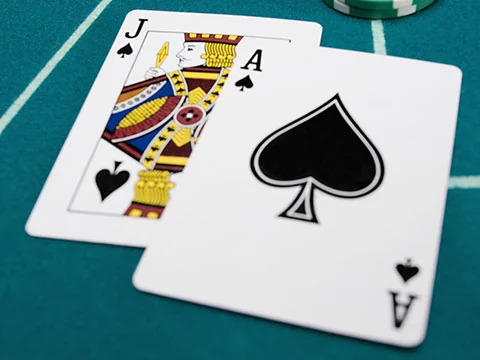What are the chances of winning at Blackjack

The Blackjack is the casino game with the lesser margin of the bench on the player, the one in which the chances of mathematical winnings are higher.
Following A basic strategy Blackjack The advantage of the counter descends approximately to 1%. This means that the counter has theoretically 51% probability of winning, while the player 49%. In this scenario Blackjack can be considered a game almost on an equal footing.
In Blackjack the player is the "first to speak", that is, the first to decide which actions to do. However, this disadvantage is well compensated by the rules to which the house must submit, that is, ask for paper if under 17 and stay otherwise.
Another aspect to be taken into consideration when it comes to probability is that of the number of decks used: it is well known in an in an incen that is the number of decks and the greater are the chances for bettors.
So let's calculate the probability in the blackjack with the help of some summary tables.
How much the number of decks affects
We said that the number of decks affects the probability in favor of the player. Considering that they can be used from 1 to 8 decks, let's see what are the differences in practical terms. As always we will evaluate the relationship between favorable cases and possible cases.
Let's take as an example the probability for the player to make a blackjack, that is to have an opening hand composed of an ace and a value card 10:
- Using only one 52 cards deck There are 64 possible pairs of cards that form a blackjack, against an overall number of cases equal to 1326. The ratio is therefore 64/1326, which is equivalent to the percentage of 4.82%.
- With two decks for a total of 104 cards Instead, we have 256 favorable cases and 5356 possible couples. The ratio is therefore 64/1339, equivalent to a percentage of 4.77%.
- Considering 8 decks and therefore 416 cards Let's see the couples valid for a blackjack at 4096 and the cases possible at 86320. The ratio becomes 64/1349 and the percentage drops to 4.74%.
As you can see, a smaller number of cards in play benefits the player even if the probability of opening the hand with a 21 is, in fact, about 1 out of 21. At the practical act there is no significant difference. The following table shows all possible scenarios:
| Number of decks | Probability of blackjack |
|---|---|
| One | 4,82% |
| Due | 4,77% |
| Three | 4,76% |
| Quattro | 4,75% |
| Cinque | 4,75% |
| Be | 4,74% |
| Set | 4,74% |
| Otto | 4,74% |
Probability of bouncing for the player
The following table shows what are the chances of bouncing for the player when asked for a card (hit) taking into account the current value of the hand. We do not examine the cases in which the score is less than 12 (you can never get busy) or equal to 21 (it is high for sure):
| Hand score | Probability of Hutting (player) |
|---|---|
| 12 | 31% |
| 13 | 39% |
| 14 | 56% |
| 15 | 58% |
| 16 | 62% |
| 17 | 69% |
| 18 | 77% |
| 19 | 85% |
| 20 | 92% |
Probability of bouncing for the counter
Finally, let's see what are the chances of bouncing for the house, using the value of the only discovery card as reference that players can see when they decide their game strategy. The worst cards for the Mazziere are 5 and 6:
| Discover | Probability of Hutting (Banco) |
|---|---|
| 2 | 35,3% |
| 3 | 37,6% |
| 4 | 40,3% |
| 5 | 42,9% |
| 6 | 42,1% |
| 7 | 26,0% |
| 8 | 23,9% |
| 9 | 23,3% |
| 10, J, Q, K | 21,4% |
| Asso | 11,6% |
Errated game strategies
There are a couple of game strategies that players like them very much, but that in reality they should never be used. Their charm is given by the perception of a minor risk for the pointer, but in reality mathematics highlights that in these situations it is the counter that draws an advantage over the standard behavior strategies.
Never get busy: strategy that plans to stay for all scores equal to or greater than 12. The margin of the Banco salt mathematically at 3.9%.
Copy the dealer: method in which the bench moves are copied, that is, ask for paper with a score of less than 17 and stop in other cases. The mathematical advantage of the desk even rises to 5.5%.
Advantage for the player: counting the cards
Those who have heard of Blackjack will certainly have heard of the trick to count the cards. This theoretically very simple game system actually allows players to have a mathematical advantage over the house, a more unique situation than rare when it comes to casino games. The aim is to start aiming strong when many high -value cards remained in decks.
However, there are two considerations to make: the first is that this trick is not seen in the mess, so better not to get caught! The second concerns Blackjack online: in virtual games all the cards are stored in the decks after each game, therefore the method of counting the cards is completely useless.
